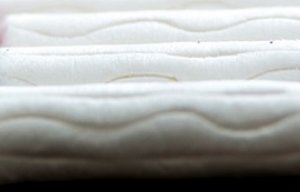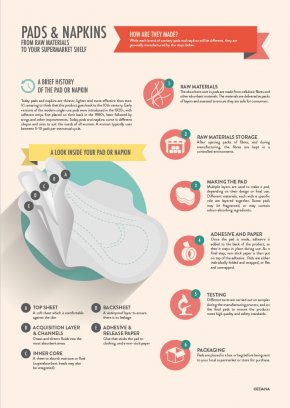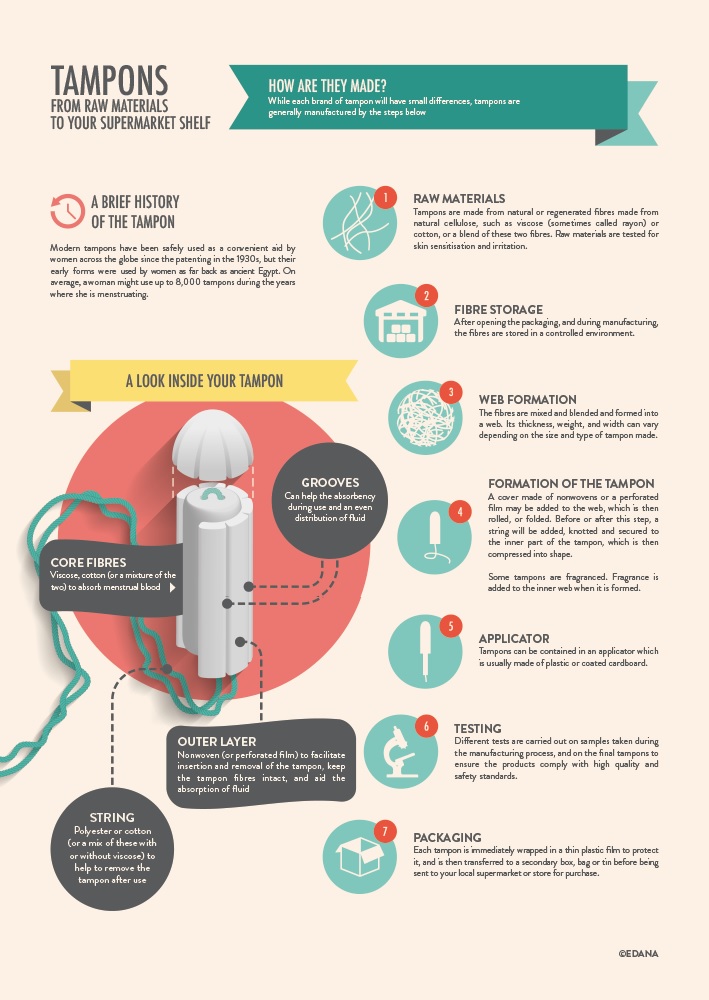
Report confirms safety of feminine hygiene products
Each infographic breaks down the manufacturing process, from the delivery of raw materials, through to their construction, testing and packaging.

3rd June 2016
Innovation in Textiles
|
Brussels
EDANA has launched two unique materials, designed to help raise understanding about how pads and tampons are put together, and what they’re made of.
Launched ahead of the global Menstrual Hygiene Day, which was held in 2016 on the 28 May, the infographics aim to help raise awareness and understanding about how a pad or a tampon is made.
Each infographic breaks down the process of manufacturing, from the delivery and collection of raw materials, through to their construction, testing and packaging. Additionally, both visuals show the layers or components, to help people understand not only how pads and tampons are produced, but also how they work when used.
“EDANA strongly supports the Menstrual Hygiene Day in its efforts to break the silence, and build awareness about the fundamental role that good menstrual hygiene management plays in enabling women and girls to reach their full potential,” said Abby Bailey, EDANA Marketing and Communications Director.
“By helping women and girls know more about how their hygiene products are manufactured, we aim to give them greater confidence in their safe and effective use.”
The images were developed together with companies who produce pads and tampons and supply the raw materials, and who are members of the Association’s Absorbent Hygiene Working Group. EDANA represents a large number of producers of absorbent hygiene products of all sizes, representing a high percentage of products on the market.
Modern tampons have been used as an aid by women across the globe since the patenting in the 1930s, but their early forms were used by women as far back as ancient Egypt. On average, a woman might use up to 8,000 tampons during the years where she is menstruating.

Tampons are made from natural or regenerated fibres made from natural cellulose, such as viscose (sometimes called rayon) or cotton, or a blend of these two fibres. Raw materials are tested for skin sensitisation and irritation.
Today pads and napkins are thinner, lighter and more effective than ever before. Early versions of the modern single-use pads were introduced in the 1920s, with adhesive strips first placed on their back in the 1980s, later followed by wings and other improvements. Today pads and napkins come in different shapes and sizes. A woman typically uses between 5-10 pads per menstrual cycle. The absorbent core in pads are made from cellulosic fibres and other absorbent materials. The materials are delivered as packs of layers and assessed to ensure they are safe for consumers.

Business intelligence for the fibre, textiles and apparel industries: technologies, innovations, markets, investments, trade policy, sourcing, strategy...
Find out more